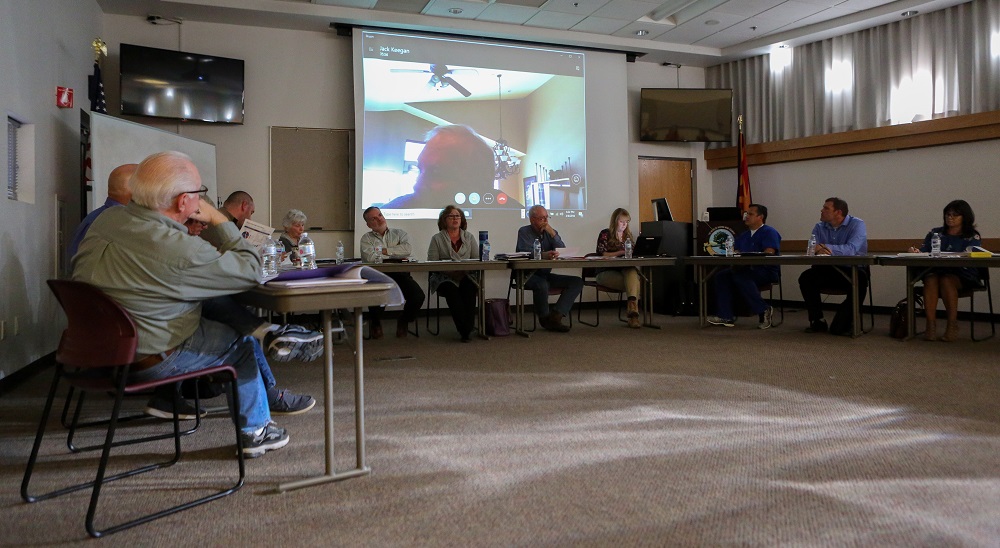
Former Mingus Union High School District interim superintendent Jack Keegan weighed in on consolidation talks between MUHSD and Cottonwood-Oak Creek School District during a committee meeting March 6.
The committee hired him on as a consultant to examine the costs of consolidating, since several committee members have pointed out that the data from 10 years ago is not a reliable source for current fact-finding talks, especially since the Clarkdale-Jerome School District has now declined to be part of the consolidation proposal.
As such, the committee also instructed each district’s business managers — Lynn Leonard at MUHSD and Dave Snyder at COCSD — to examine the costs, which they reported at the last committee meeting Feb. 20.
While both Keegan and the business managers reported some savings if the districts consolidate, both expressed a pressing issue in equalizing teacher pay — it would cost anywhere from $600,000 up to $1 million to bring COCSD teachers pay parity with MUHSD teachers.
“I truly believe you’ve got to have parity, otherwise you’re not going to have a very happy marriage,” Keegan said March 6.
His main suggestion was to have everything in line and ready for the new consolidated Governing Board to approve, so minimal time would be spent in limbo.
The committee is considering petitioning the Arizona State Legislature for funds to equalize salaries.
“If we do get that initial help, once the districts agree, we’ll plan it out, and those cost savings will be addressed in that plan implementation where you can sustain the salaries,” said JoAnn Cook, a committee member and president of the COCSD Governing Board. “But at least it would be something to get us going for a year to three years.”
But raising salaries will become an annual additional expense, so petitioning the Legislature for funds — even funds for the next several years — is not a permanent solution.
“This money has to be found every year. It’s not a one-time find. If we do this, that has to be addressed,” said Anita Glazar, a member of the committee and president of the MUHSD Governing Board.
As with the business managers’ presentation, Keegan’s analysis sprouted more questions and conversation than tangible progress, including discussion about combined buses and bus routes, questions about savings from combined offices and utilities and the issue of salary parity.
Keegan recommended creating a more detailed report of what a consolidated district would look like before moving forward with the process.
As Snyder said during the Feb. 20 meeting, the business managers’ report “does not equal a definitive piece, rather a conversation starter.”
Keegan expressed a similar sentiment about his own analysis presented at the March 6 meeting.
“This was intended just to say, ‘Hey, if you’re going to look at what you’re going to do, here’s a couple things to look at.’ It was not intended to be a detailed analysis,” he said.
Rebekah Wahlberg can be reached at 282-7795 ext. 117, or email
rwahlberg@larsonnewspapers.com